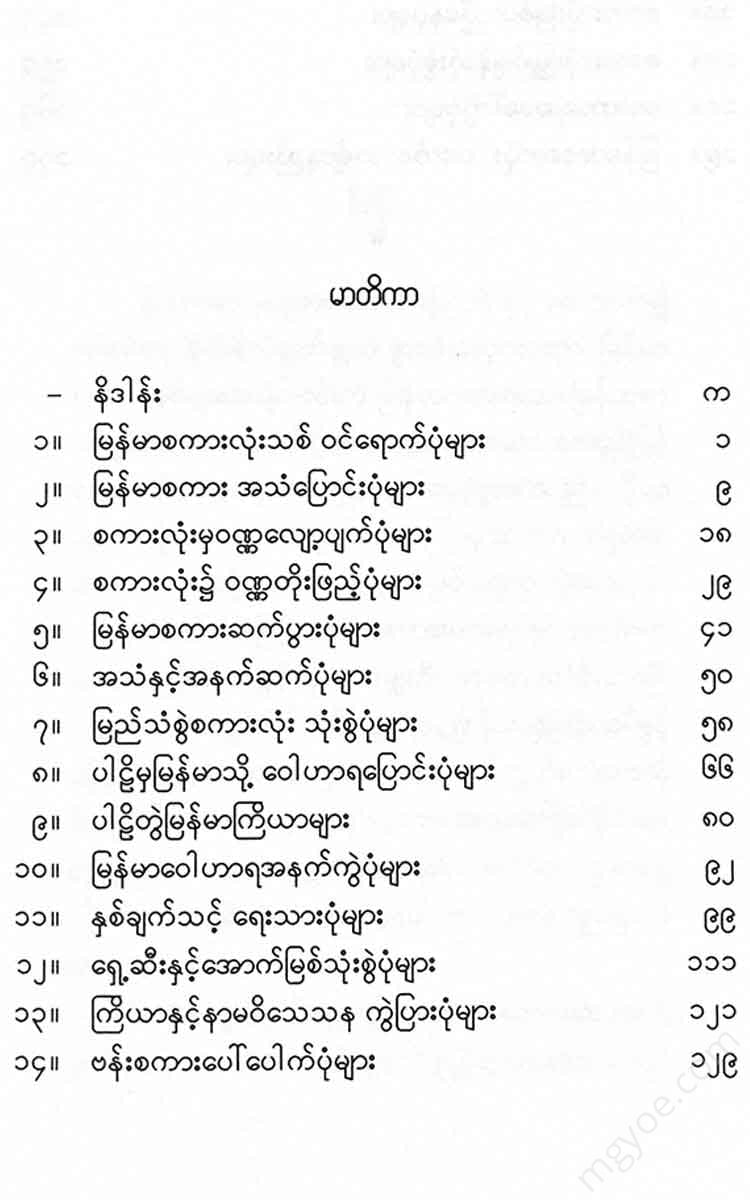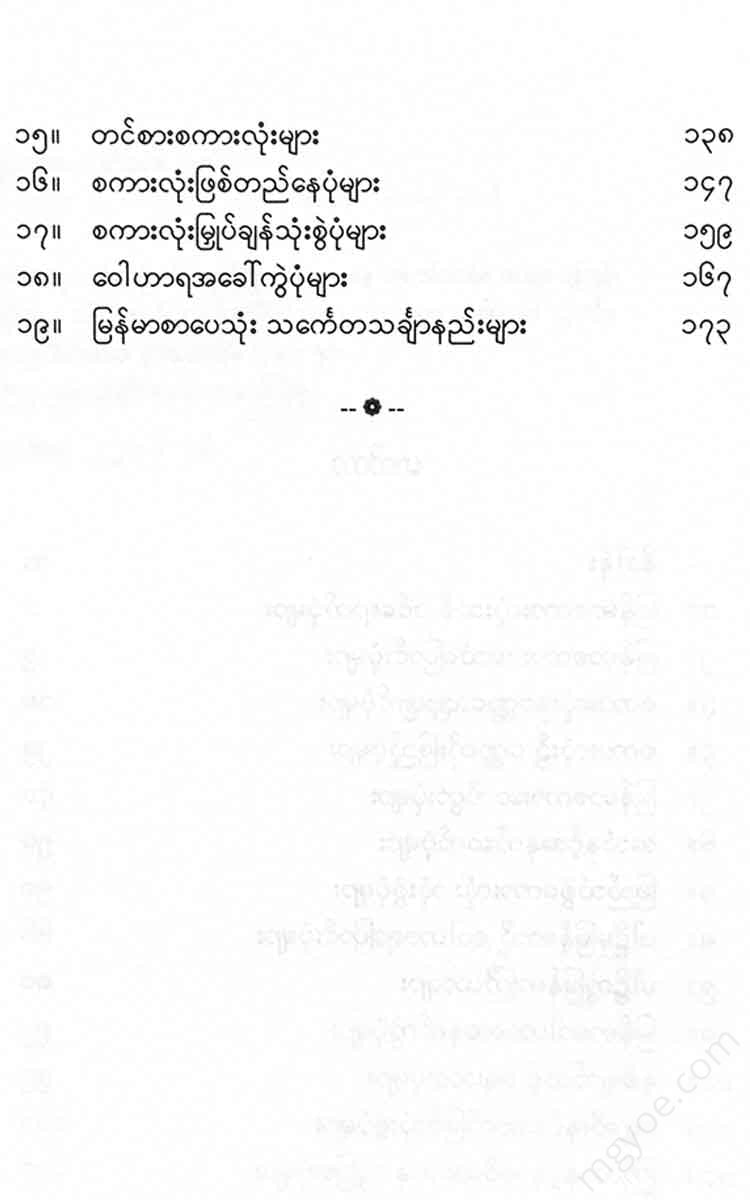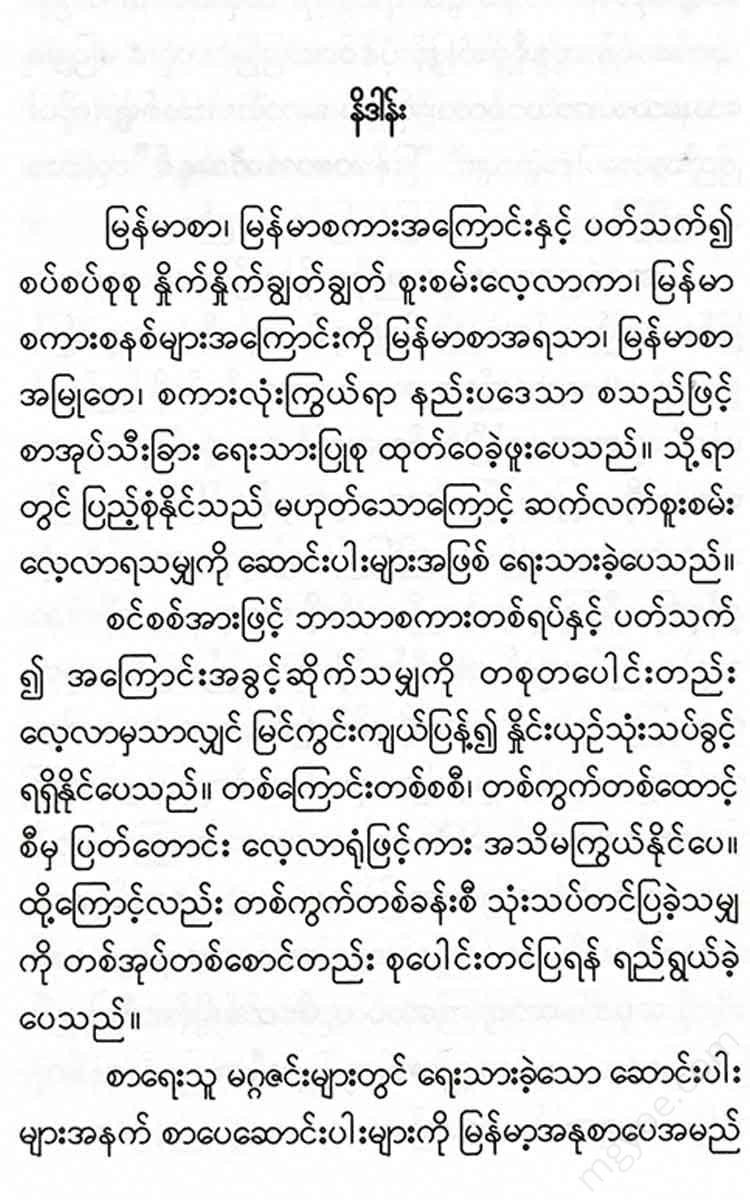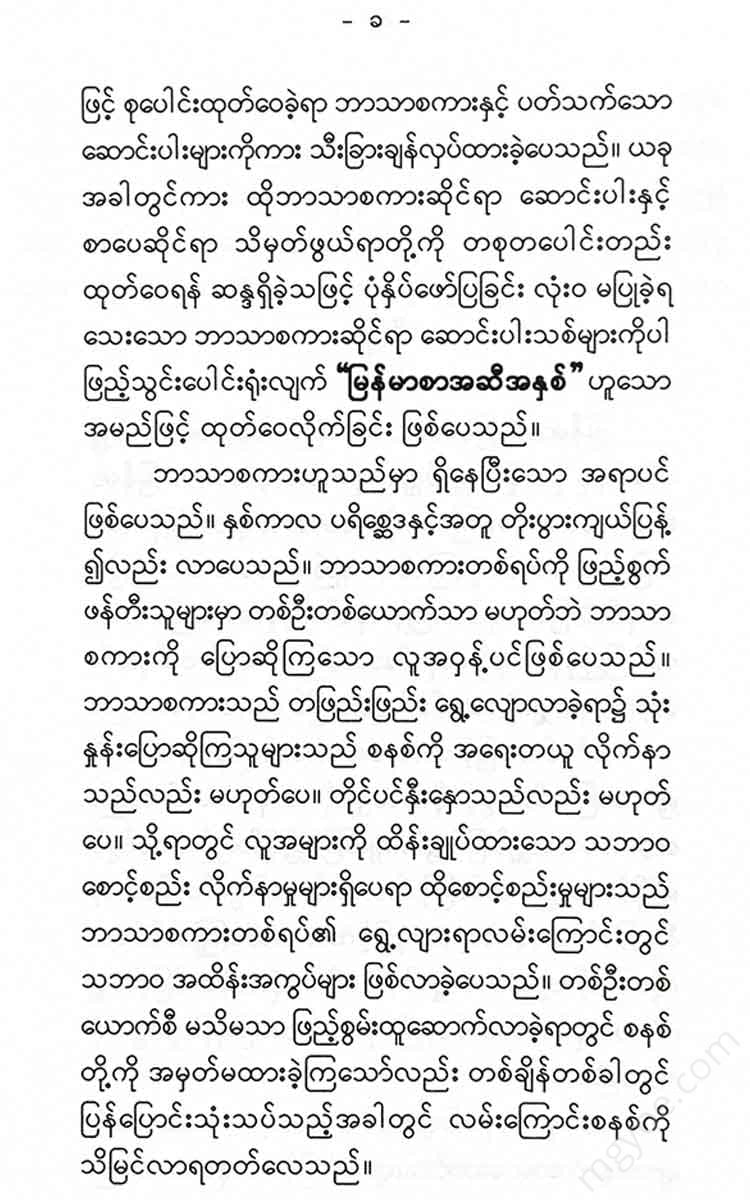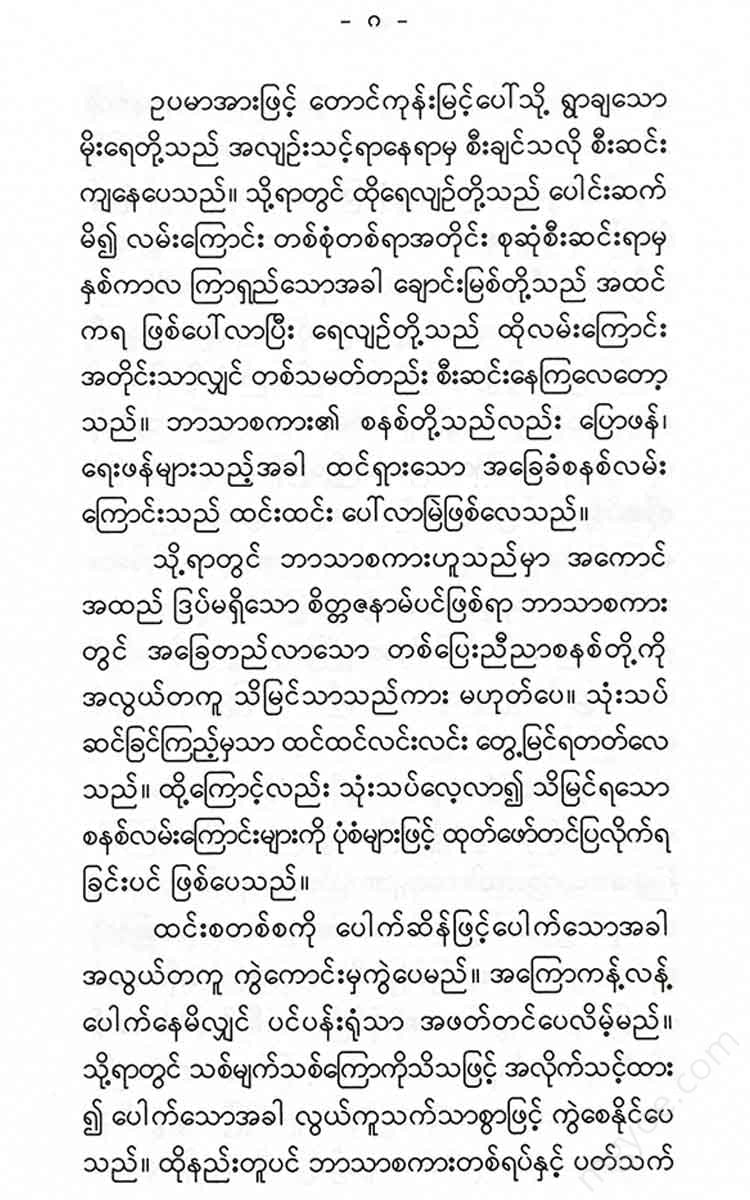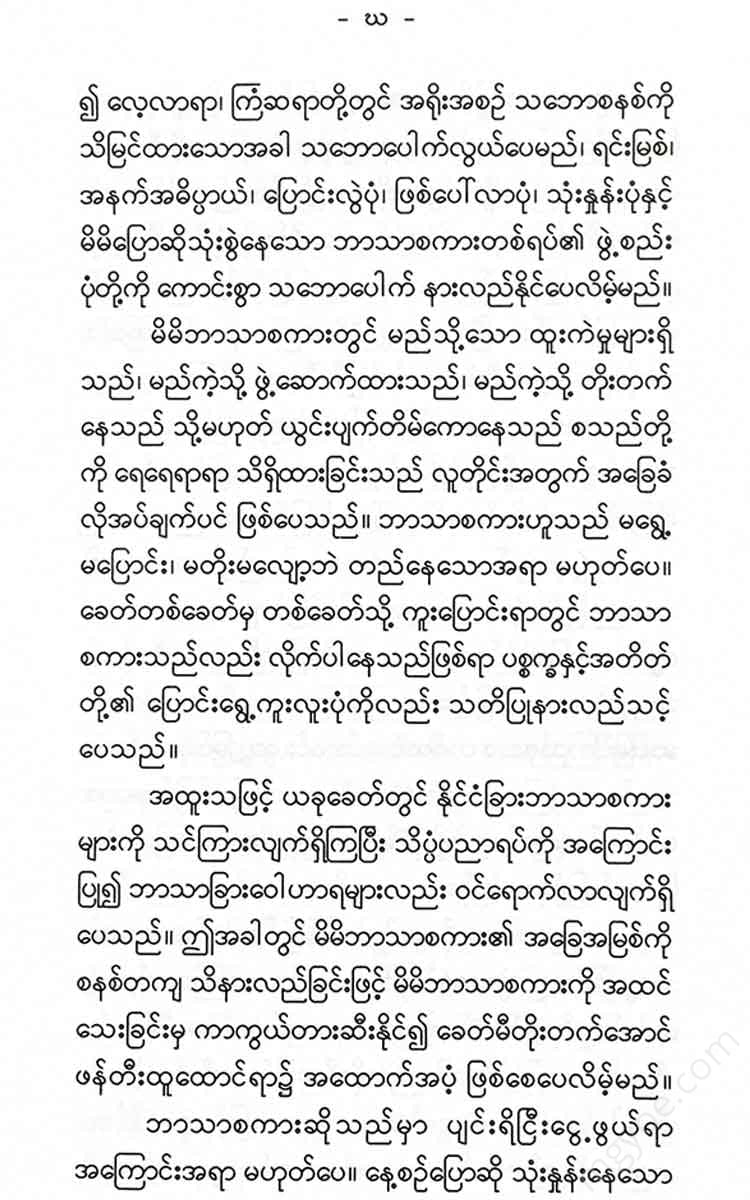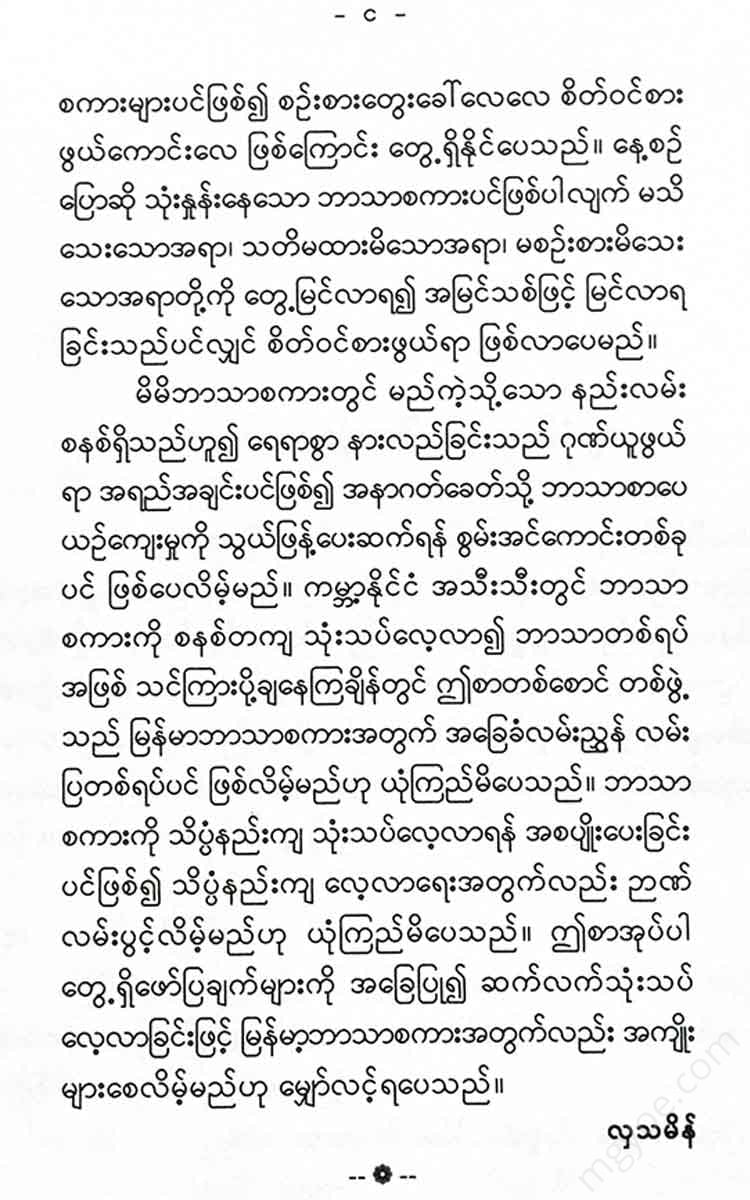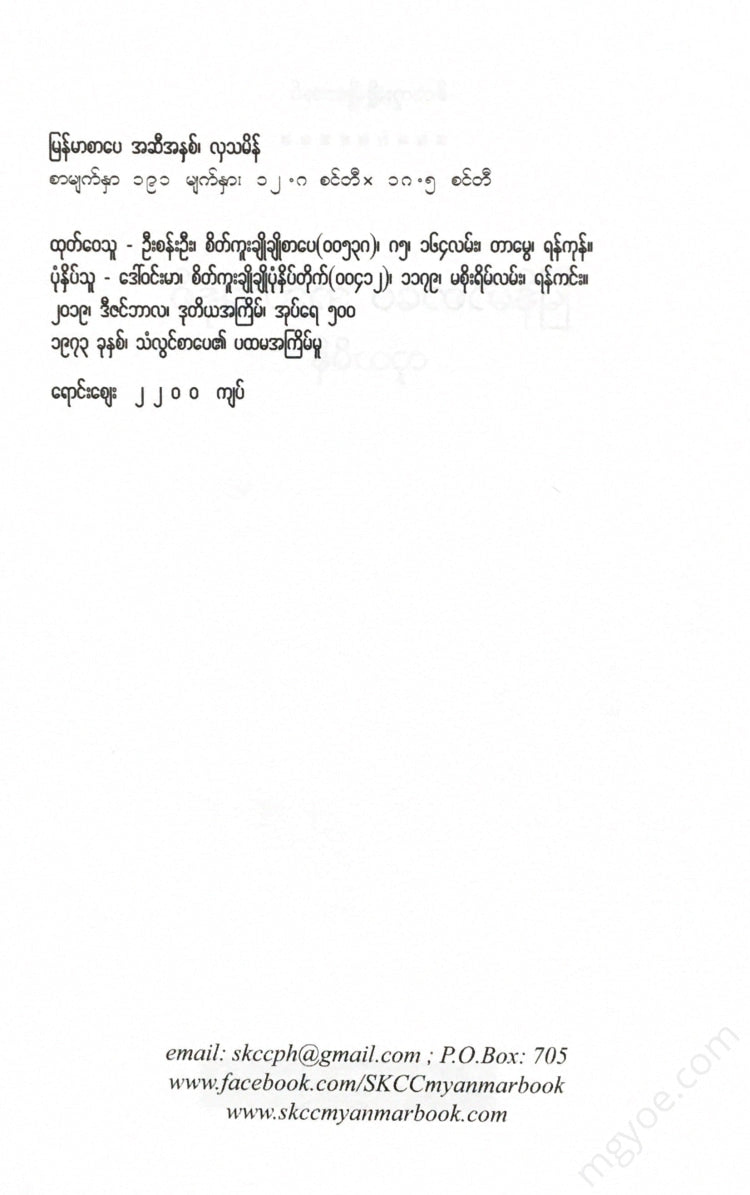စိတ်ကူးချိုချိုစာပေ
Hla Samain - The essence of Burmese literature
Hla Samain - The essence of Burmese literature
Couldn't load pickup availability
1. How new Burmese words are introduced
Every language is constantly introducing new words. The way new words enter and the way they enter may vary, but there is a certain pattern to these introductions. When we carefully investigate and research how new words enter the Burmese language, we find the following ways in which new words enter.
1. Integration
New words can be created by combining existing words, whether they are in pairs, opposites, or in pairs. For example,
(Shin-ke) effort, effort, work,
Edge - tip,
(opposite) interest-deduction, incident, fragment,
Up and down, back and forth,
(Additional) Six-letter word, fist, sword,
Table setting,
2. Refill
New words can also be created by adding additional words to the original word to make it more meaningful. In form
(Nonsense) Ni-titi, Si-ri-ri, Moet-toe-mtat, Pyat-ta-ta, Sho-toe-shan-tan, Klan-kasan, To-ti-to-te, Pat-pad-pat-thi, A-na-parna, Nga-nga-on, Kree-khting,
(meaning) black-white, white-brown, ripe-ripe, pale-yellow, rotten-rotten, pagoda-buddha, khas-noth-khas-pauk, one-one, six-fish-fish,
3. Replication
New words can also be formed by the addition of words. In the form of
Rich, rich
4. Pairing of verses
New words can also be formed by combining a root word or a compound word with other elements such as verbs, nouns, genders, and adjectives. In form
(Objective) Fear, fear
Permission, plot, writing, form, method, style,
(noun) crowd, group of people, flock, flock of birds,
(gender) widow, sister, peacock, goddess, mistress, doctor,
(Contradiction) She is not a good person, she is not a good person, she is not a good person.
5. Voice change
By changing a syllable in a word from its original sound to a new one, new words with the same meaning can be created. In a way,
Narapat (from Ti), Mudi (from Ni), Gavanpat (from Ti)
Spread (from Chi), Suriya (from Su), Zaim (from Samaam)
Warlord (from Tuyen), Gunnyin (from Chin), Hainnu Nwe (from Nae)
6. Importing from another language
New words can also be obtained by importing words from a closely related language. In addition to Pali, Sanskrit, and Mon, Burmese has also imported new words from neighboring languages such as Tibet, China, and Thailand, as well as from ethnic languages such as Maru, Azi, Shan, Kachin, Karen, and Kayah, and from many world languages such as English, Hindi, Japanese, French, and German. There are six basic ways in which foreign words are imported into Burmese.
(a) Directly taken. Dhamma, desire, charity (Pali), party, radio, camera (English), pauksi, kyarnyo, kwasi, (Chinese), katat, kalo, tingkob, kana, samoot, kanuta (Mon),
(b) Burmese. Jesus-Jesus, Dekhi-Dehi, Pulik-Pulis, Gully-Golf, Evangel-Evangelis, Koda-Koda, Soap-Soap, from English. Kutthala-Kusala, Lanka-Alankara, Sin-Citta, Bhikkhu-Arahant, Upad-Upaddava, from Pali.
(c) Voice exchange. Hydrogen, communist, geometric, socialist, democratic,
(d) Similar translations. Prostitute - Nagarayanabini, Paragu - Paragu, Curtain - Tirokarani, Balcony - Sandasala, Buddha - Buddha (from Pali), Red Cross, Shuttle, Red Ribbon System, Marginal Value (from English).
(e) Mixture. Suffering, suffering, essence, Dhamma (Pali-Burmese), vehicle, heaven, cake, shirt, (English-Burmese).
(f) Echoing. Roko Soko (Soka Ro Go) Thappapa Taw, (Sataw) Alenataw (Alenataw) Ramtam Thandan (Yantasanti) Giipatta (Gihibatta)
7. New name order
New words can also be formed by linking objects that do not yet have a name. In form,
Parachute, typewriter, manual labor, television, wide-angle lens, helicopter, telescope, brain machine, film, X-ray, headphones, relay race, badminton,
8. Invention
New words can also be acquired by creating new words for a reason.
(From the sound) Tae-ee, tae-soo, tae-ha-ha, tae-fai-fai,
Thump, t
(of movement) thump thump, thump thump,
(From the metaphor) Gourd, fire, fire, frog.
The forest, the moon, the shoes, the pig (money), the clam (pregnancy),
9. Repair
New words can also be obtained by modifying and changing existing words through methods such as deleting, adding, and combining words. In form
(a) filling, a moment (from a moment), an eternity (from an eternity),
Palm (from palm), soft tissue (from soft tissue), and hump (from hump).
(b) Removal, rikkha (from parikkha), saṃcaya (from aṃcaya), gati (from agati), sāka (from sālika), sediya (from setiya), pama (from samā).
(c) Sanni-sap, Poon-ee (from Paon-ee), Lok-kut (from Law-ka-vut), Ta-thwe-ma-chak (from Ta-thwe-ma-chak), Myat (from Myat-pagoda), Mo-o (from Wife), Bwin (from Ba-win).
10. Destruction
Words sometimes become obsolete over time, and the remaining words often emerge as new words. In the form of -
Bheelayanyan (from Bheelayannan), Sayemyito (from Sayebeto, Saye Maeto, Saye Nayato), Myinsai (from Myinsai), Khachore (from Khakyan), Japoe (from Konepoe), Kesharaja (from Keshara), Tauktomera (from Daktomaena), Pyidaerey (from Pyidaterey), Ruthu (from Ruthu).
11. Example
For example, when a metaphor is used as a metaphor, it is sometimes used as a new vocabulary when more people understand it.
The sound of the trumpet is played, the sound of the trumpet is played, the sound of the long stick is played. The sound of the trumpet is played, the sound of the bell
Short.


